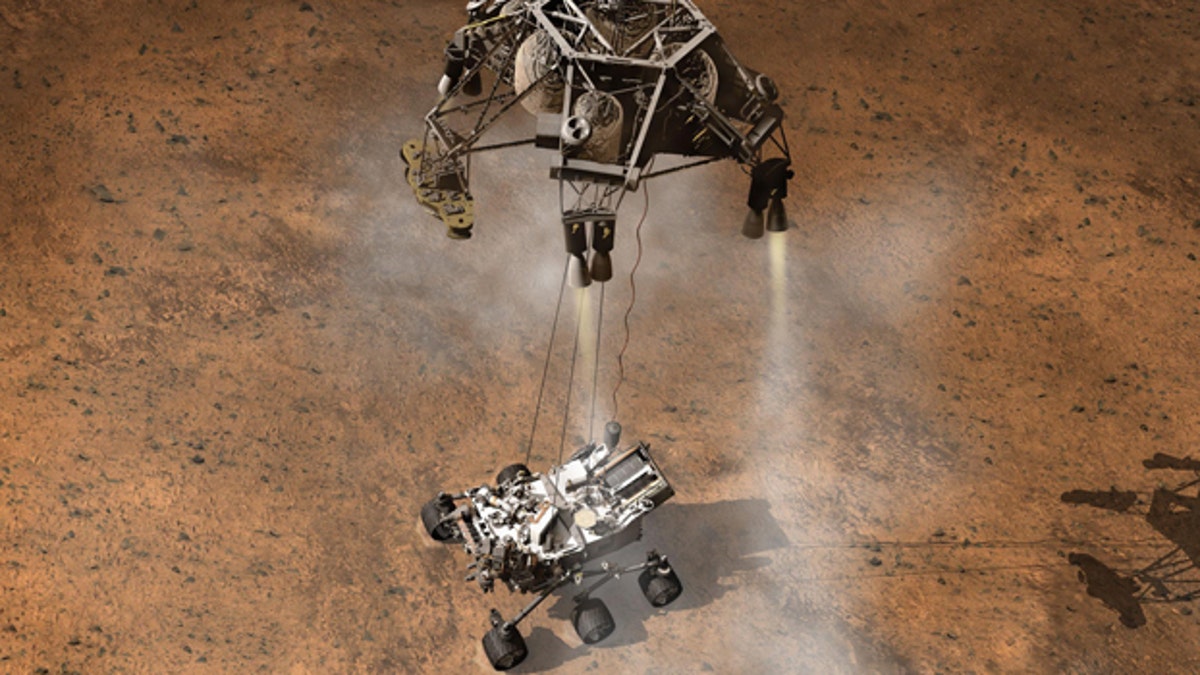
This artist's concept depicts the moment that NASA's Curiosity rover touches down onto the Martian surface. (NASA/JPL-Caltech)
After more than a decade of planning, NASA’s Curiosity rover is only 97 days from touching down on Mars -- where it will search for evidence that the red planet might once have been someone's home.
It’s been a long journey for the world's largest extraterrestrial explorer. By the time it lands, the 1-ton Curiosity will have traveled 354 million miles over the course of 8 1/2 months.
"Every day is one day closer to the most challenging part of this mission," said Pete Theisinger, Mars Science Laboratory project manager at NASA's Jet Propulsion Laboratory in Pasadena, Calif. "Landing an SUV-sized vehicle next to the side of a mountain 85 million miles from home is always stimulating."
[pullquote]
Last week, the team went through final rounds of testing and simulations as they prepare for the big moment.
"Our test rover has a central computer identical to Curiosity's currently on its way to Mars," said Eric Aguilar, the mission's engineering test lead at JPL. "We ran all our commands through it and watched to make sure it drove, took pictures and collected samples as expected by the mission planners. It was a great test and gave us a lot of confidence moving forward."
As large as a car, the mobile, nuclear-powered Curiosity, equipped with 10 science instruments for analyzing the Martian surface, is NASA's most ambitious rover yet.
It's "really a rover on steroids," NASA's Colleen Hartman, assistant associate administrator for science, told the Associated Press. "It's an order of magnitude more capable than anything we have ever launched to any planet in the solar system."
Launched from Cape Canaveral on Nov. 26, 2011, NASA expects Curiosity’s delivery on the evening of Aug. 5, 2012, to begin a two-year mission. The landing site is near the base of a mountain inside Gale Crater, which researchers believe may hold evidence of water and wet environments of early Mars.
That Curiosity is so close to its final destination is in itself a small miracle.
"Mars really is the Bermuda Triangle of the solar system," Hartman said.
"It's the death planet, and the United States of America is the only nation in the world that has ever landed and driven robotic explorers on the surface of Mars. And now we're set to do it again."
